A TRADERS' MONTH IN CRETE 🇬🇷
Birthplace of Modern Civilisation. A Friendly People, Rugged Terrain, and Horrible Drivers. This is Crete.
Over the next 12 months I’ll be slow-travelling around the world with my family while working and trading. I’m very grateful that our ‘job’ gives many of us the opportunity to do this, so I thought it would be interesting to note down some thoughts along the way, which may hold some nuggets for other traders, or people considering to do something similar. As always, reach out if you’ve got any questions, or you can unsubscribe here.
“Crete, the largest of the Greek islands, is steeped in millennia of history and culture. As the cradle of the ancient Minoan civilisation, one of Europe's earliest, Crete offers a treasure trove of archaeological sites, including the famous Palace of Knossos. This site, linked to the myth of the Minotaur and the labyrinth, provides a fascinating glimpse into Bronze Age sophistication.
Beyond its historical allure, Crete's geographical diversity is equally captivating. From the rugged mountains that slice through its landscape to the pristine beaches that fringe its coast, the island offers natural beauty in abundance. The Samaria Gorge, a world-renowned hiking destination, and the idyllic Elafonisi Beach, known for its pink sands, are just two examples of its varied landscapes.
The island also boasts a rich culinary tradition. Cretan diet is famed for its health benefits and reliance on fresh, local ingredients like olive oil, herbs, and cheeses. Culinary enthusiasts revel in trying specialties such as Dakos and Mizithra, and Raki.
For travelers, Crete offers a compelling blend of historical depth, natural beauty, and cultural richness, making it a perennial favorite among those seeking a deeper understanding of Greek heritage and an authentic Mediterranean experience.”
LOCAL EXCHANGE / CURRENCY:
No exchanges in Crete. 1AUD = ~0.60EUR
TIMEZONE:
GMT + 3 – EASTERN EUROPEAN TIME
7 hours behind AEST currently.
Timezone worked reasonably well for me. 3am Aussie Market open meant I got ~5hrs of solid shuteye, followed by a couple more after the first hour moves played out. 10am European open and 5pm SPX a breeze.
CONNECTIVITY:
Despite assurances of 40+MBPS and a 5G backup before booking our Crete accommodation, about 15MBPS (often dropping to about 2MBPS) and no 5G back ensued. Unsure whether I’m just completely cursed, or we are actually lucky to have relatively functioning, average speed internet in Australia.
BROKER AVAILABILITY:
No issues with any brokers.
SAFETY:
Zero concerns.
FOOD:
The way we’ve decided to ingratiate/immerse ourselves in the culture of each country we live in is through Food & Drink. We cook local recipes every day, and try to eat and drink like the locals do. It’s a tough job but somebody has to do it.
Gyros was the staple of our diet, and quality was consistently excellent.
Pressure cookers are used for many of the Cretan specialties, and our accommodation also came with one provided, so we used this a lot to get our Gordon Ramsey on. Big fan of this piece of equipment and will be purchasing one when we return home.
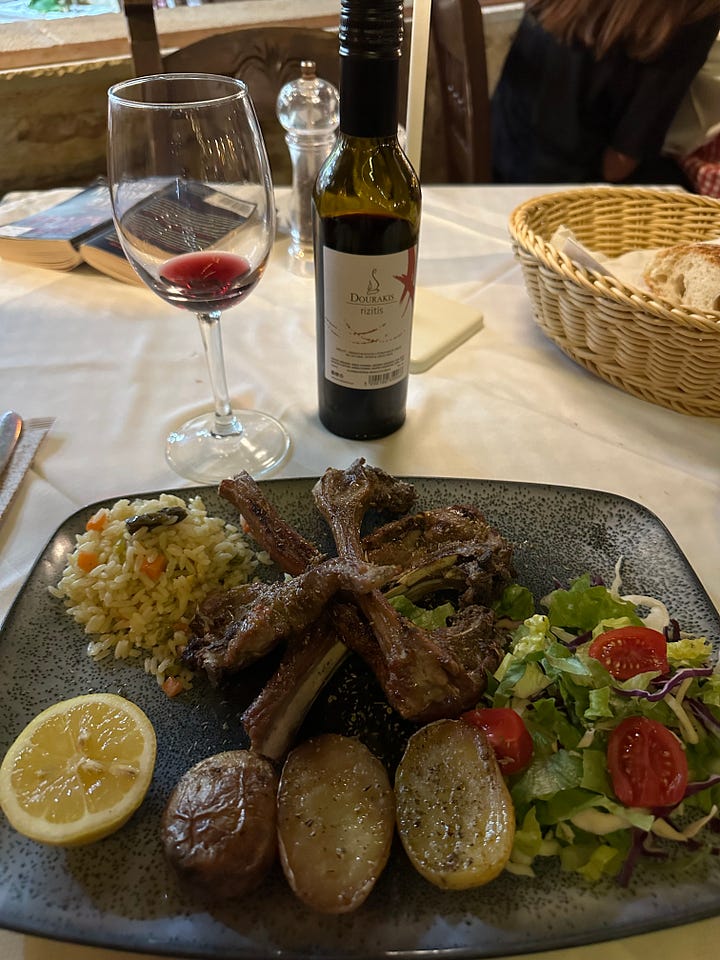
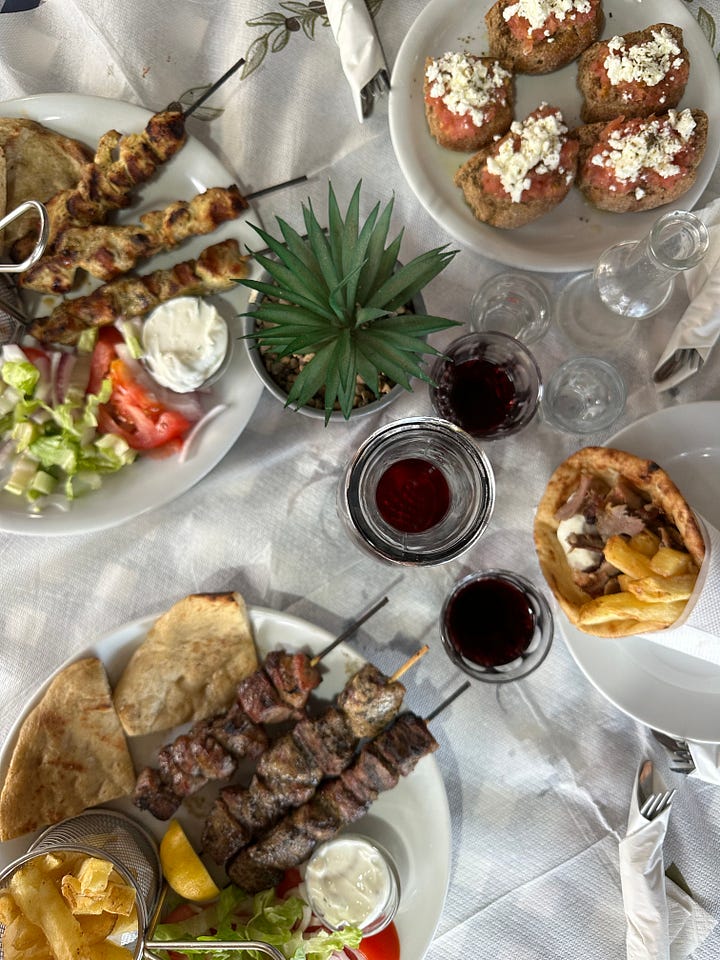


My top local dishes were:
Dakos (Ntakos): A traditional Cretan salad made from barley rusks topped with chopped tomatoes, crumbled feta or mizithra cheese, olives, capers, and a generous drizzle of olive oil.
Moussaka: Although found throughout Greece, the Cretan version often has a richer variety of ingredients, layering sliced eggplant and potatoes with minced meat, topped with béchamel sauce.
Lamb Stifado: Stifado is a traditional Greek stew that features a rich, aromatic tomato-based sauce with onions, garlic, and a blend of spices like cinnamon and allspice. When made with lamb, the meat is slow-cooked until tender, often accompanied by small pearl onions or shallots. This dish is hearty and deeply flavorful, perfect for the colder months.
Lamb in Oven (Kleftiko): Kleftiko is a classic Greek dish where lamb is marinated in garlic, lemon, and herbs (often oregano and thyme), then slow-cooked in the oven wrapped in parchment paper or in a sealed pot. The slow cooking renders the lamb exceptionally tender, falling off the bone, and infuses it with the flavors of the marinade. It's a celebratory dish often enjoyed at gatherings.
Giouvetsi (Beef with Orzo): Giouvetsi is a Greek oven-baked dish typically made with beef or lamb, though chicken can also be used. The meat is cooked in a rich tomato sauce and then combined with orzo (tiny rice-shaped pasta) or sometimes kritharaki (small pasta similar to orzo), and baked until the pasta is tender and the flavors meld beautifully. It's often seasoned with cinnamon and bay leaves, adding a unique depth to the dish.
Goat Tsigariasto is a traditional Greek dish, particularly popular in Crean cuisine, that involves slow-cooking meat, typically lamb or goat, until it becomes extremely tender.
Our favourite night of the whole month was at ‘The Greek Cook Out’. Actually run by a South African who fled his own country, and welcomed to Kissamos. Long table buffet dinner shared with Dutch and Canadians, Dancing, Raki shots, National Anthems and Smashing Plates to Zorba music. Highly recommend.
DRINK:
Beer: Mythos or Fix Hellas. Both good, session beers.
Wine was cheap and plentiful. I had no idea what I was drinking, but was good enough for me. I quite enjoyed Retsina - a unique type of Cretian white (or occasionally rosé) wine that has been made for at least 2000 years. Its distinctive flavour comes from the addition of Aleppo pine resin during the fermentation process.
Raki (Tsikoudia) is a distilled spirit which can be flavoured or plain, and served complimentary at just about every restaurant we went to after dinner. Basically the Cretian version of mainland Ouzo, but without the Anise. Potent.
Greeks pride themselves on their coffee, especially their own invention; the ‘Freddo’. “Freddo Espresso is made by taking a double shot of espresso and vigorously shaking it with a metal cocktail shaker or an electric hand mixer along with a few ice cubes. This process cools the coffee rapidly and creates a rich, frothy foam, known as "kaimaki," on top. The drink is served over ice in a tall glass.”
Unfortunately, I found there’s a reason the Greeks arn’t internationally known for coffee. Coming direct from Italy - personally I found the coffee overpriced, and pretty average all round.
COST OF LIVING:
The supply of resort style accomodation on Crete is staggering. The large coastline and pristine water lends itself to offering this type of accomodation and tourism, and prices are generally quite low. We paid ~$2000 for a 2bdr resort style apartment on the beach for the month. We also did quite a few short overnighters, where the going rate for a nice Airbnb was ~70AUD.
I found grocery costs ~20% higher than in Sicily, and booze even more so. But eating out was ~20-30% cheaper. Main meals ranged from ~€8-€15, and that includes a 25% VAT, complementary bread, Raki, and dessert most of the time. It was always difficult to go past the grilled lamb chops, about €22 / kg cooked to perfection in most Tavernas. Gyros ~€3.50, Beers €2.50, 1Ltr Table Wine €8.
Coffee was ~€3-4. We also rented a car for the entire month, which cost ~€500 / 800AUD.
VISAS
Greece is also part of the Schengen area in the EU, which allows Australians three months of access to all participating countries. If you wish to stay longer, you’ll need to leave the area for three months (Ukraine is nice this time of year) and then return.
MUST-HAVE APP:
Google Translate, Chat GTP, Google Maps.
QUICK FIRE CLOSING COMMENTS:
We stayed the month at a place called Maleme, a very quiet beachside town which is most well known for its airfield, which was defended by the ANZAC’s, and, when taken during the Battle of Crete in WW2, turned the tide in favour of the Germans who subsequently took the Island, to the horror of locals. We were also fortunate to be there for the 83rd Anniversary of the ‘Battle of Crete’.
Next time I think I would look to stay in a more lively area, possibly one of the larger towns such as Malia with both an old, and a new town.
We tripped all around the Island apart from the East, but favourite places we visited were Malia, Chania, and Rethymno. All had incredibly beautiful old towns, but also with a trendy, urban vibe. Loutro is known as a mini-Santorini, can only be reached by boat or by foot, and was well worth the 8km mountain hike.
Imbros Gorge hike was impressive, and gave us a chance to reflect on how grateful we should be to those Aussies that came before us, as it served as the evacuation route for the ANZAC’s following being over-run by the Germans in the Battle of Crete. Trips to the Battle of Crete museum (and being forced to share some Raki while playing with some of the guns left behind after the War) and both the German, and Allied Cemeteries were also extremely moving.
Ellafonissi, Falassarna, and Sweet Water Beach. Australia has got the goods when it comes to sandy beaches, but it’s hard to beat the water in the Med. Wow.
Didn’t compare to Italy in terms of grand Chuches, but some very cool ancient Monasteries on the Island, which would be a good way to spend an hour or two in silence contemplating life.
Cretians pride themselves on being some of the most welcoming and friendly people in the world, and I would find it hard to argue. Treated like family in most of the places we visited. 50% friendlier than Sicily, and on par with Bali for me. They very much enjoy sharing their Raki with you, as well.
Love to see so much pride in their own country. Greek flags everywhere.
Crete is known to have some of the worst drivers in the world, evidenced by an extremely high incident of car crashes. I feel like this may have to do with the fact that the official speed limits are ridiculously low, meaning everybody ignores them and after that, the urge to drive like a race car driver is high. We saw 1000’s of miniature Monasteries or “kandylakia’ all over Crete. These small shrines resemble miniature churches or chapels and are usually built as memorials at spots where someone has died, typically in car accidents. They serve as a tribute to the deceased and a place for passersby to stop and pray, or light a candle in memory of the lost loved ones.
Back to Italy now. In summary, definitely a reason why so many people recommended Crete to us for an extended stay, would highly recommend. I feel we would have gone somewhat stir-crazy on one of the smaller islands. Will miss the Greek food, but very much looking forward to good Italian coffee.
Ellada.
Marto





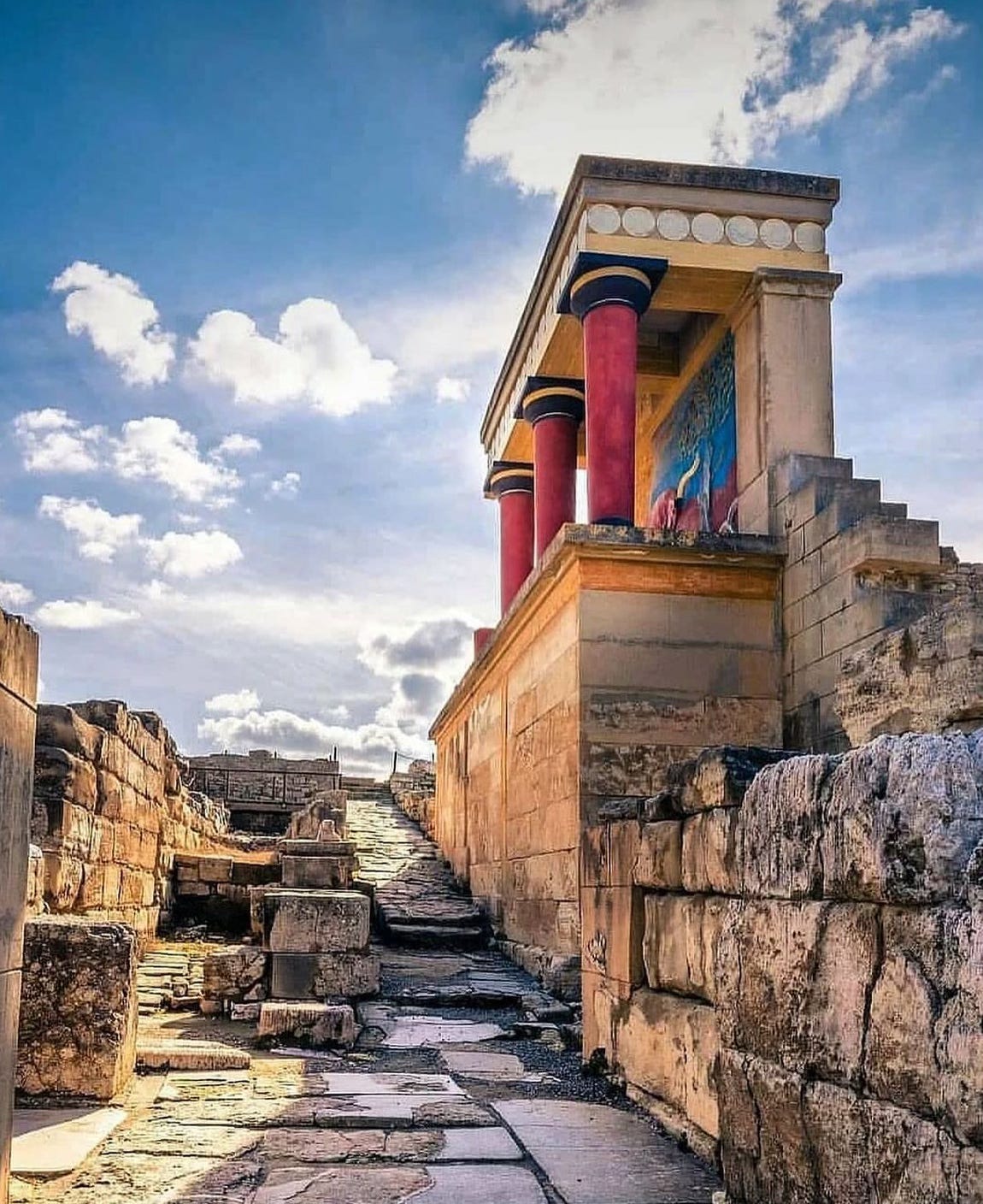
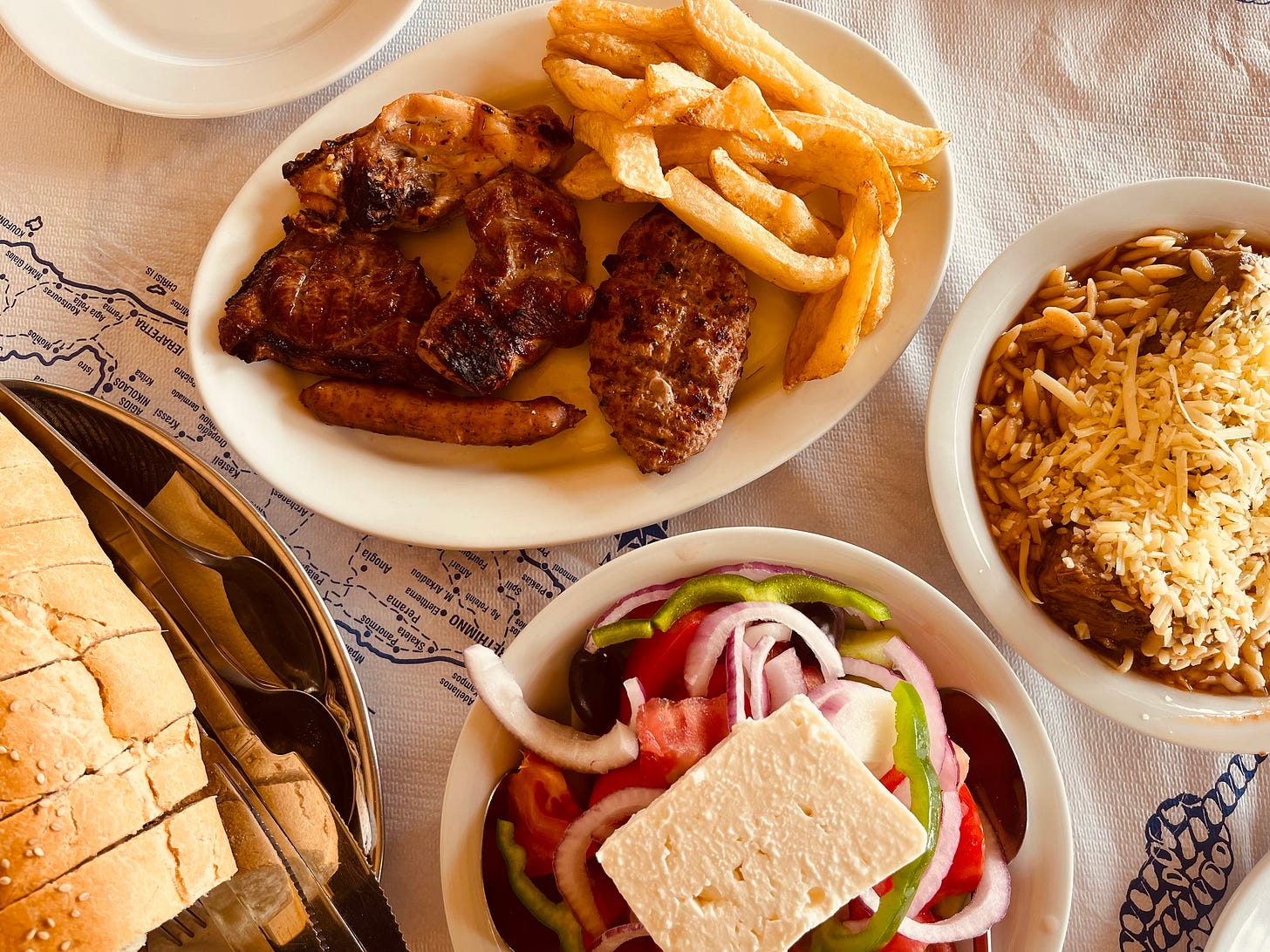
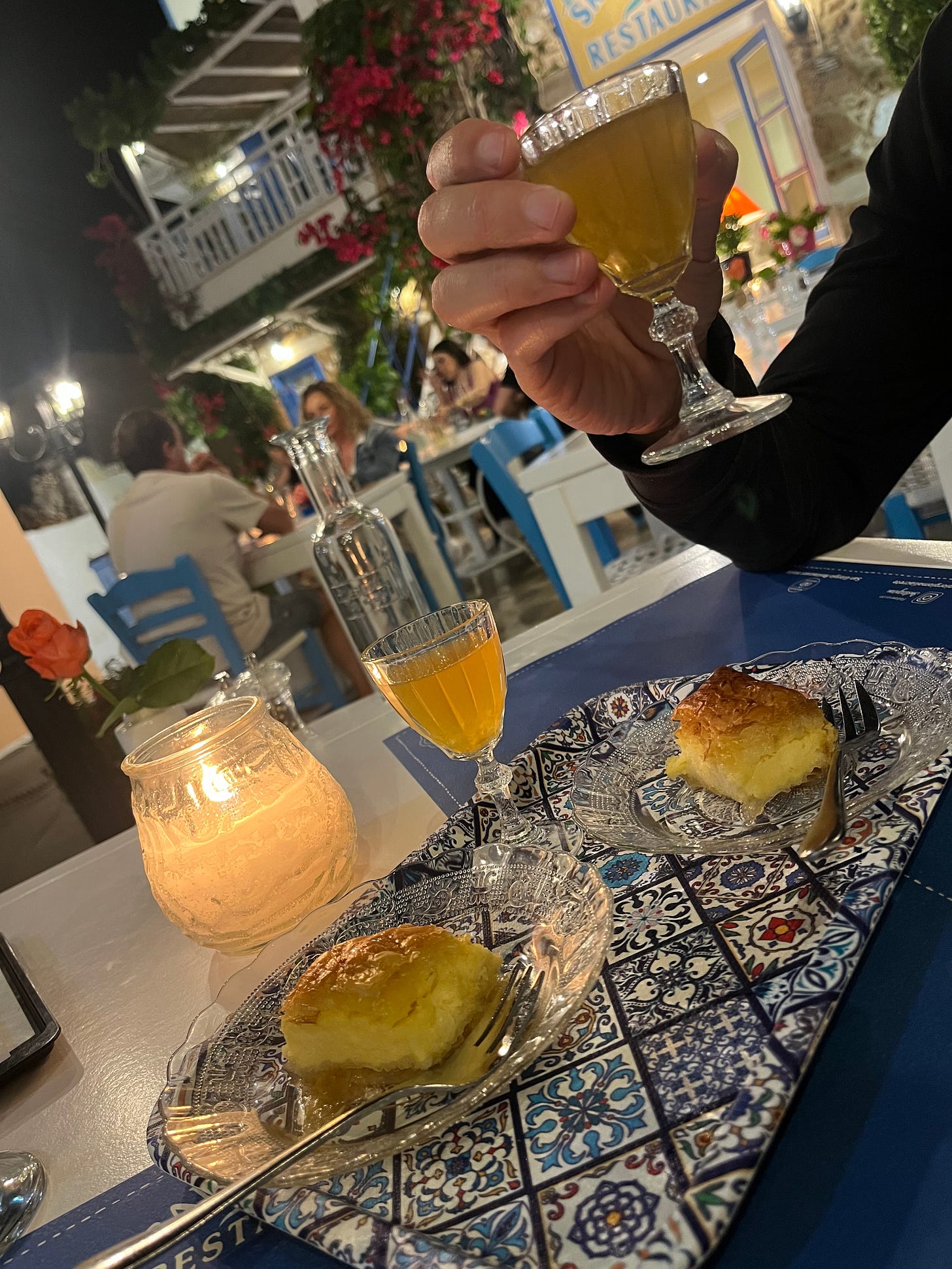
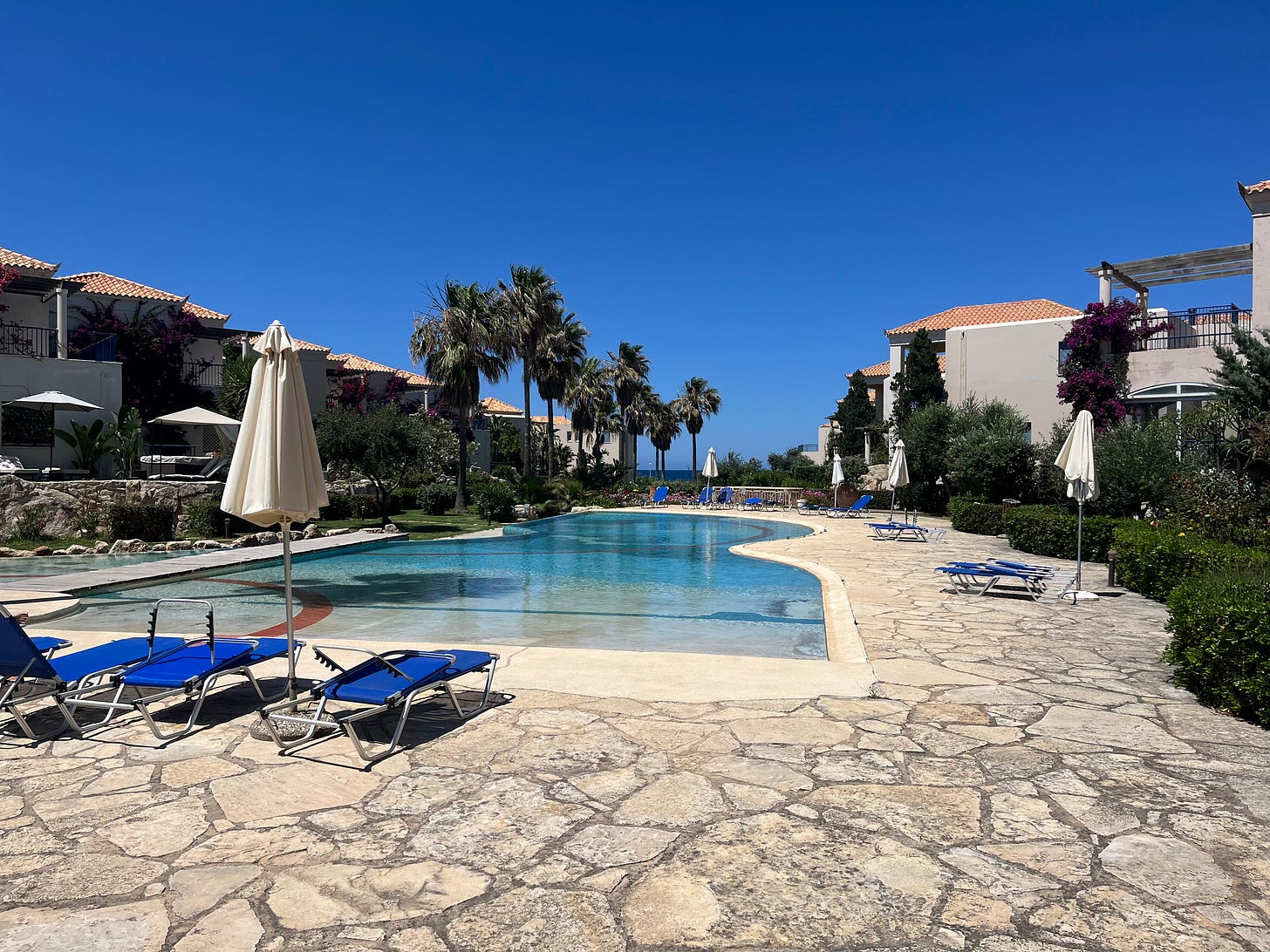

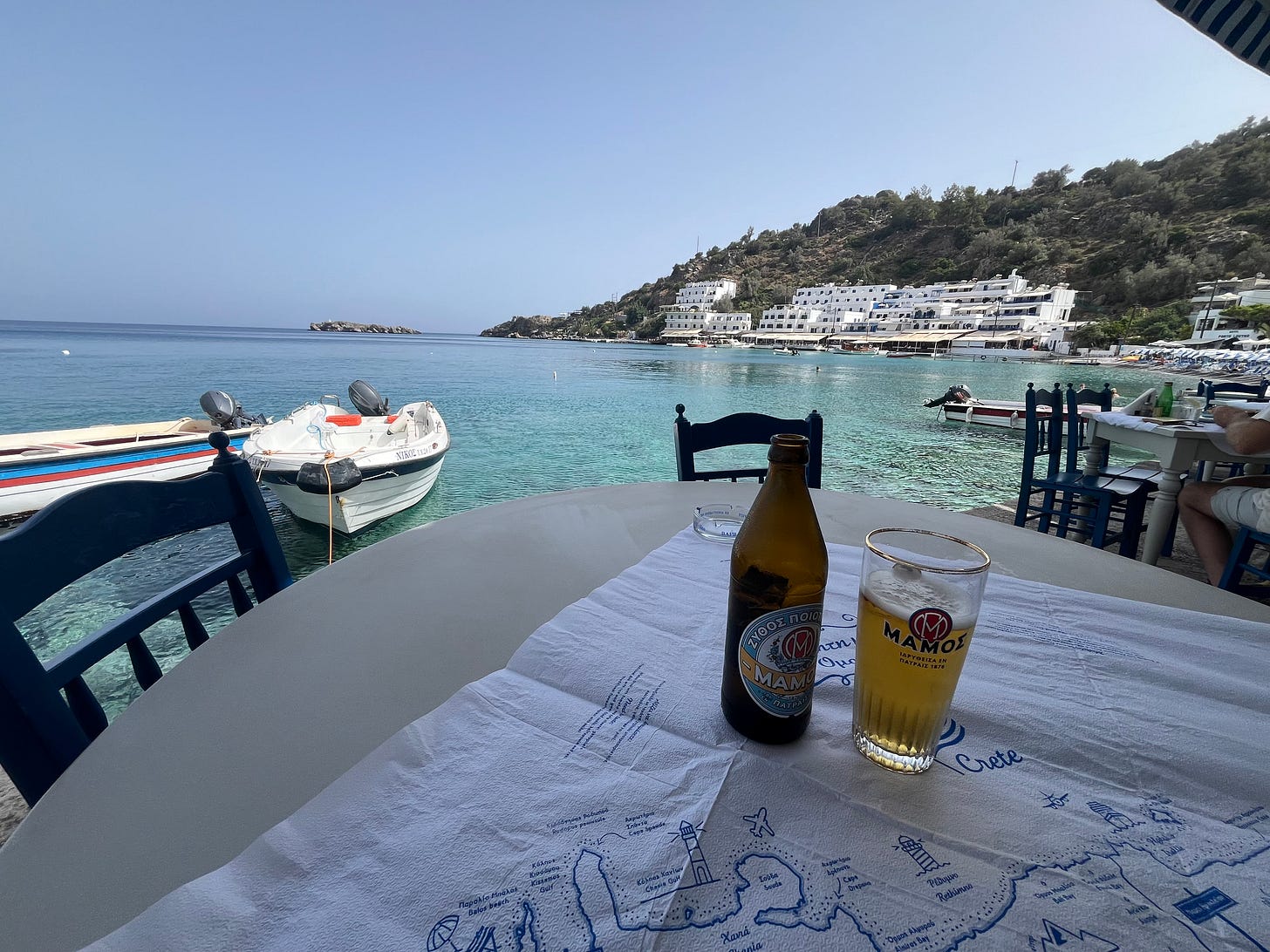

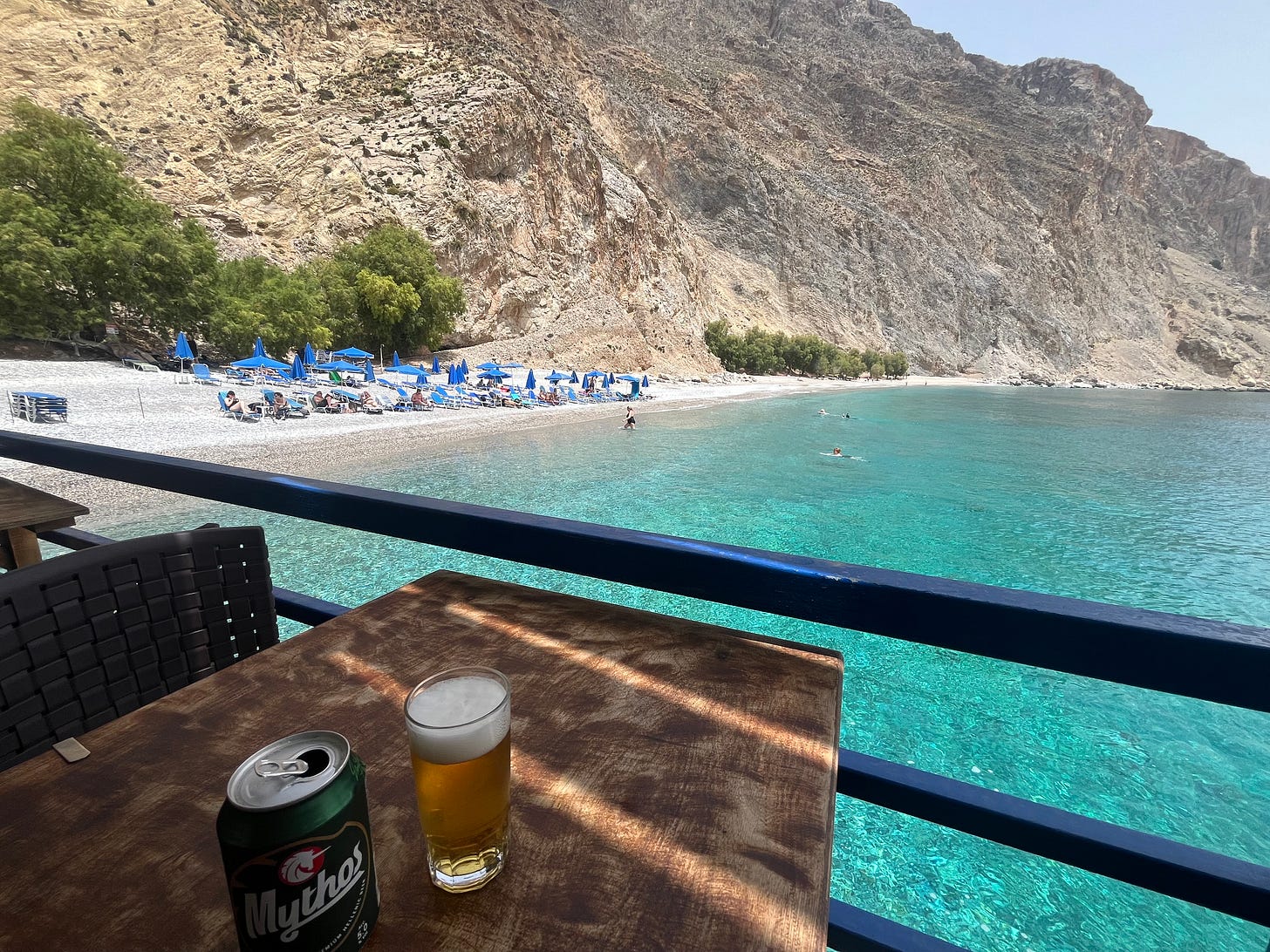
all depends how you had your Freddo Marto!!! so many different combinations ;)